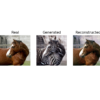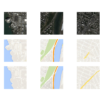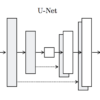A Why is my GAN not converging? GAN models do not converge. Instead, the generator and the discriminator models find a stable equilibrium (hopefully). The generator deceives the discriminator at some level (but not all the time) and the discriminator effectively classifies real and generated images (but not all the time). For more on this […]
Search results for "Generative AI Machine Learning"

How to Implement the Frechet Inception Distance (FID) for Evaluating GANs
The Frechet Inception Distance score, or FID for short, is a metric that calculates the distance between feature vectors calculated for real and generated images. The score summarizes how similar the two groups are in terms of statistics on computer vision features of the raw images calculated using the inception v3 model used for image […]

How to Implement the Inception Score (IS) for Evaluating GANs
Generative Adversarial Networks, or GANs for short, is a deep learning neural network architecture for training a generator model for generating synthetic images. A problem with generative models is that there is no objective way to evaluate the quality of the generated images. As such, it is common to periodically generate and save images during […]

How to Implement Progressive Growing GAN Models in Keras
The progressive growing generative adversarial network is an approach for training a deep convolutional neural network model for generating synthetic images. It is an extension of the more traditional GAN architecture that involves incrementally growing the size of the generated image during training, starting with a very small image, such as a 4×4 pixels. This […]

A Gentle Introduction to the Progressive Growing GAN
Progressive Growing GAN is an extension to the GAN training process that allows for the stable training of generator models that can output large high-quality images. It involves starting with a very small image and incrementally adding blocks of layers that increase the output size of the generator model and the input size of the […]

How to Develop a CycleGAN for Image-to-Image Translation with Keras
The Cycle Generative Adversarial Network, or CycleGAN, is an approach to training a deep convolutional neural network for image-to-image translation tasks. Unlike other GAN models for image translation, the CycleGAN does not require a dataset of paired images. For example, if we are interested in translating photographs of oranges to apples, we do not require […]

How to Implement CycleGAN Models From Scratch With Keras
The Cycle Generative adversarial Network, or CycleGAN for short, is a generator model for converting images from one domain to another domain. For example, the model can be used to translate images of horses to images of zebras, or photographs of city landscapes at night to city landscapes during the day. The benefit of the […]

A Gentle Introduction to CycleGAN for Image Translation
Image-to-image translation involves generating a new synthetic version of a given image with a specific modification, such as translating a summer landscape to winter. Training a model for image-to-image translation typically requires a large dataset of paired examples. These datasets can be difficult and expensive to prepare, and in some cases impossible, such as photographs […]

How to Develop a Pix2Pix GAN for Image-to-Image Translation
The Pix2Pix Generative Adversarial Network, or GAN, is an approach to training a deep convolutional neural network for image-to-image translation tasks. The careful configuration of architecture as a type of image-conditional GAN allows for both the generation of large images compared to prior GAN models (e.g. such as 256×256 pixels) and the capability of performing […]

How to Implement Pix2Pix GAN Models From Scratch With Keras
The Pix2Pix GAN is a generator model for performing image-to-image translation trained on paired examples. For example, the model can be used to translate images of daytime to nighttime, or from sketches of products like shoes to photographs of products. The benefit of the Pix2Pix model is that compared to other GANs for conditional image […]
